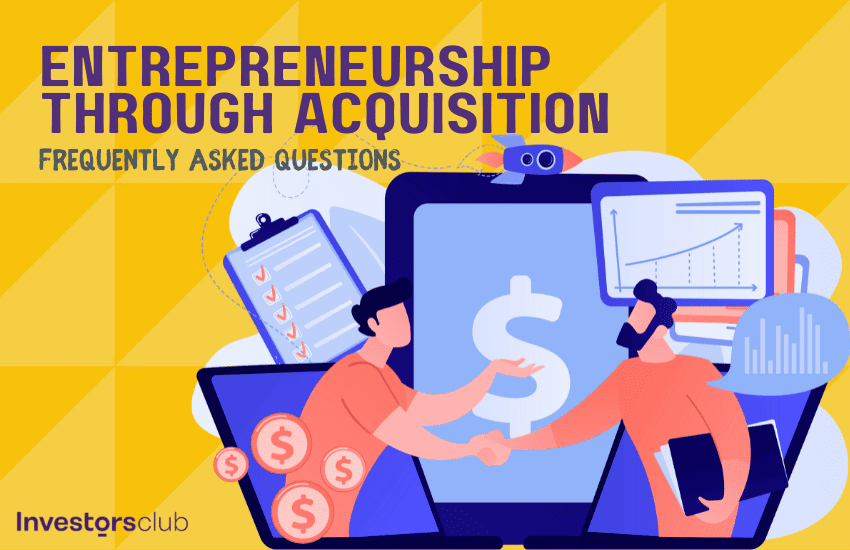I was asked for my thoughts on the EtA space. I spent some time compiling my answers, and would like to share my thoughts below.
Entrepreneurship through acquisition (ETA) is becoming more and more popular. What’s your take on it?
As an avid supporter of paths that lead to financial independence and entrepreneurship, I am excited about the growing interest in EtA. While not new, EtA’s recent acceleration and expanding recognition is nice to see. The evolution of the EtA ecosystem is marked by advancements in education, tools, and community building. A testament to this growth was evident at a recent EtA networking event I hosted in Miami, which attracted over 70 RSVPs and saw more than 50 attendees. The diversity of the group, with individuals from various cultures and backgrounds, was particularly inspiring.
Several key factors are propelling the growth of EtA:
- The “Silver Tsunami“: This phenomenon, characterized by baby boomers reaching retirement age, is creating a surge in available, cash-flow-positive businesses for acquisition. This generational shift presents a wealth of opportunities for new business owners.
- Technological Advancements: The rise of technology has democratized entrepreneurship, making it accessible to a broader audience. The journey of scaling a business from an established base (“1 to 10”) is distinct from starting from scratch (“0 to 1”), and not everyone chooses to embark on the latter. Today’s environment facilitates the processes of starting, selling, or acquiring a business more seamlessly than ever before.
- Economic and Societal Shifts: Increasingly, individuals are driven by a desire to break free from the traditional 9 to 5 job structure, opting instead to “bet on themselves”. This pursuit of financial freedom and autonomy is a strong motivator fueling interest in EtA. A common term I see being used to describe these individuals is “Corporate Refugees”.
In what ways is buying better/easier than building? And in what ways is it worse/harder?
Neither path is easy but there are certainly pros and cons to each approach.
Pros of Buying
- Immediate cash flow and revenue.
- Established customer base and market presence.
- Existing operational systems and employee expertise.
- Creative financing structures
Cons of Buying
- Potential for inherited problems (e.g., outdated practices, underperforming staff).
- Higher upfront capital requirement.
- Due diligence is crucial and can be complex.
- Cost of capital is increasing and SBA loans require a personal guarantee
Pros of Building
- Opportunity to shape company culture and operations from the start.
- Potentially lower initial capital investment.
- Flexibility to pivot and adapt the business model.
- A lot of access to capital outside of SBA
Cons of Building
- Time-consuming with slower return on investment.
- Higher risk with no guaranteed customer base.
- Challenges in establishing brand recognition and market position.
How can indie hackers do ETA effectively (tips, processes, best practices, etc.)?
Indie hackers are uniquely positioned to excel in the world of EtA. Their diverse skill set, often encompassing areas like technology, operations, marketing, and sales, provides a significant advantage over those without such hands-on business experience. I think it’s also fair to say that indie hackers have a higher risk tolerance compared to the overall population.
Key Best Practices for Pursuing EtA
- Education and Resources:
- Essential Reading: “Buy Then Build” by Walker Deibel is a foundational book for understanding the business buying process. It’s an indispensable resource for anyone interested in EtA, offering deep insights into M&A procedures, terminology, and strategies.
- Community Engagement: Engage with relevant online communities such as Indie Hackers, Searchfunder, Facebook Groups, Reddit, and X (Twitter). Participating in private WhatsApp groups focused on EtA can also be highly beneficial.
- Stay Informed: Subscribe to newsletters like The Business Inquirer, SMB Deal Hunter, XO Capital, and They Got Acquired for ongoing insights and updates on EtA.
- Crafting a Buyer Profile:
- Analyze your strengths, experience, and objectives to define clear criteria for potential business acquisitions. Tools like ChatGPT are great at this type of analysis. It’s crucial to target businesses that align with your skill set, passions, and long-term ambitions. A buyer profile will help to quickly filter through opportunities.
- Assembling a Deal Team:
- Collaborate: Utilize communities or platforms like DueDilio to build a robust deal team. This team typically includes a buy-side M&A advisor, an attorney, and a financial due diligence expert.
- Independent Evaluation: Even if you have the capability to conduct due diligence, an independent evaluation is invaluable. With over 40% of businesses experiencing some form of financial discrepancy or fraud, expert due diligence is essential to identify and avoid potential pitfalls.
- Preparation for Acquisition:
- Be prepared for business acquisition. This includes establishing clear acquisition criteria, maintaining a professional online presence, securing a loan pre-qualification letter, and assembling a proficient deal team.
- Like entrepreneurship, EtA can be stressful and take a toll both mentally and physically. Make sure to take care of your health throughout the process.
- Targeting Larger Deals:
- There’s a prevailing wisdom in EtA to aim for the largest feasible transaction. The effort required to close and manage a $500k deal is often comparable to that of a $2M deal. Larger acquisitions not only offer greater potential returns but also demand similar operational efforts, so aim high.
Where’s the best place to buy a business?
It depends. The effectiveness of a deal-sourcing strategy largely hinges on your specific buyer profile and the type of businesses you are targeting. Different marketplaces cater to varied business niches, so your choice should align with your acquisition goals.
For instance, if you’re pursuing online opportunities, platforms like Acquire, Flippa, and Empire Flippers are known for their focus on digital businesses. Conversely, if you’re more interested in traditional brick-and-mortar or ‘Main Street’ opportunities, a marketplace like BizBuySell or Private Market Labs would be more suitable. Niche marketplaces such as Microns and Tiny Acquisitions may also be appropriate for those pursuing smaller transactions.
The good news is that the rise of business listing aggregators – such as Kumo, Interexo, and BizNexus – has simplified the process. These platforms aggregate listings from various sources, offering business buyers a comprehensive view of available deals through a single interface.
However, a multi-pronged approach to deal sourcing often yields the best results. A combination of strategies, including exploring marketplaces, engaging with brokers, and initiating direct outreach to potential sellers, can significantly enhance your chances of finding the right business to acquire. This approach allows you to cast a wider net and increases the likelihood of discovering a business that truly aligns with your criteria and aspirations.
Is there any particular stage/type/characteristic of a company that is particularly good for getting a big return on investment?
The key to achieving high returns on investment in business acquisitions lies in finding a synergy between the buyer and the business. However, there are several fundamental characteristics to consider when identifying potential high-ROI opportunities:
- Stable and Consistent Earnings: Target businesses that demonstrate a history of steady cash flow, especially those that have maintained financial stability across varying economic conditions.
- Scalable Business Model: Look for businesses that have the potential for growth without a corresponding significant increase in costs. Scalability is a critical factor for long-term value creation.
- Untapped Market Potential: Seek out businesses in niche markets that have not yet fully penetrated their market but show high growth potential. These businesses often offer a unique opportunity for expansion.
- Strong Customer Base: Businesses with a loyal and diverse customer base present less risk. Particularly valuable are those with high customer retention or high switching costs, as they ensure a more predictable revenue stream.
- Operational Inefficiencies: Identify businesses where you can add significant value through improvements in operations, marketing strategies, or technology. These inefficiencies represent untapped potential for enhancing profitability and efficiency.
- Clear Exit Opportunities: Consider businesses that operate in markets with evident exit strategies, such as acquisition by strategic buyers or investor groups like private equity firms. Having a clear exit path can significantly influence the ROI.
Anything else you think is relevant?
A couple of additional tips:
- Make sure you understand how a business actually makes money
- Don’t fall into analysis paralysis. If you’ve found a deal that aligns well with your criteria and shows good potential, be decisive and pursue it.
- Have a well-thought-out plan for how you will operate and scale the business post-acquisition. Ideally, this strategy should include operational improvements, market expansion plans, and long-term growth objectives.
- Have a margin of safety. Very often, business performance temporarily declines when new ownership takes over. Be prepared.
- Take care of your health and relationships

Founder
DueDilio is a due diligence concierge connecting business buyers and private investors with quality, pre-vetted due diligence solutions. We have a deep network of independent professionals, boutique and mid-size firms, and subject matter experts that can address finance, technology, legal, operations, HR/benefits, and other diligence needs. Our clients are searchers, independent sponsors, SMBs, and private investors pursuing deals in the range of $1M to $25M in transaction value.

